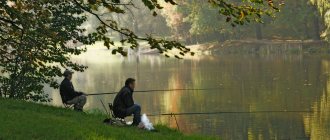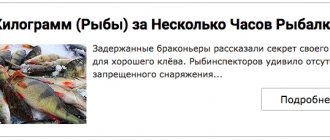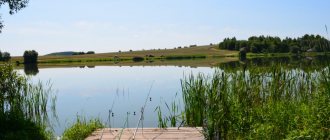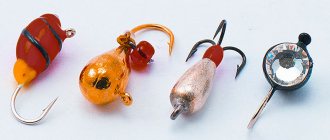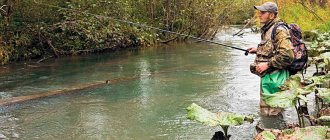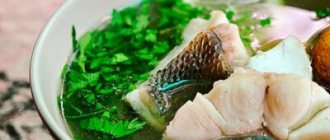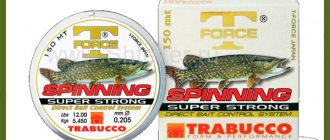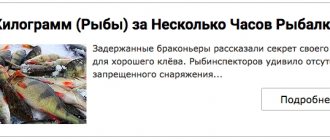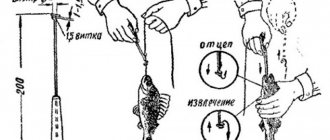The fish is quite weather dependent. The relationship between weather and fish behavior is clearly visible during sudden changes in weather. Especially strongly, the fish bite depends on atmospheric pressure and the dynamics of its changes. Fish bite forecasts are most often made based on weather forecasts.
- Fish biting before and after rain
- Fish biting in the wind
Atmospheric pressure and fish bite
When we talked about what the fish bite in general depends on, we noted that atmospheric pressure is the most powerful and significant meteorological factor, which has the strongest and most direct impact on the fish bite.
Cloudiness, wind, or lack thereof, cold or heat are phenomena directly related to place, time, and dependent on the dynamics of atmospheric pressure. Cyclones and anticyclones change the weather, and we see this in the form of wind, rain and temperature changes.
When we see that it has started to rain, the atmospheric pressure has already dropped. Therefore, atmospheric pressure is the primary factor influencing fish bite, even before the weather changes.
At what pressure do fish bite?
A normal pressure is 760 mm Hg ± 3 mm. Pressure surges in any direction negatively affect the fish’s bite and behavior, as the density of the water and the amount of oxygen dissolved in it change.
Observations show that a gradual decrease in pressure has a positive effect on fish biting. This is especially noticeable in the activity of pike. There is an assumption that this is due to the fact that the fish senses an upcoming change in the weather and instinct pushes it to actively eat food, but this is just speculation. With a gradual increase in pressure, a deterioration in the bite of predatory fish is noticed, while peaceful ones continue to feed as usual. But there can always be exceptions.
Any sudden and significant change in pressure has a strong physiological effect on the condition of the fish, up to its disorientation in the water column, which forces it to refuse to feed. The fish tries to compensate for the pressure by sliding into the depths or moving to shallow areas, or hanging in the upper water horizons.
Different layers of water have different illumination and temperature. By changing the depth in an attempt to compensate for the pressure, the fish finds itself in unusual conditions.
When atmospheric pressure increases, the density of water increases, and the fish rises from the depth; when the pressure decreases, on the contrary, the fish goes to deeper parts of the reservoir, if possible. This is how the fish adapts to the changed pressure and at this time the fish bite weakens or stops altogether.
After adaptation, if the pressure remains stable, the fish resumes activity and the fish bite is restored. Theoretically, the larger the fish, the more sensitive it is to changes in pressure.
Wind with insects
The wind that blows from the shore often brings flying insects to the pond. They attract some fish: dace, bleak, ide, chub and small asp. Gusts of wind can throw moths, butterflies, dragonflies, grasshoppers and other insects from meadow grasses and coastal vegetation directly into the water. Experienced fishermen do not miss this opportunity, quickly re-equip the fishing rod and get a rich catch. That is why it is important to know in which wind the fish bite better, and to be able to use the chance that nature itself provides.
Cloudiness and fish bite
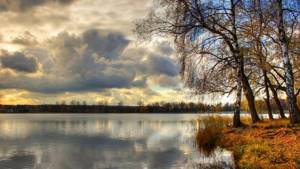
Cloudiness does not directly affect the fish bite, but the degree of illumination and temperature depend on it. In summer, especially in the heat, fish are more active in cloudy weather. This is especially evident in the behavior of predatory fish and especially pike.
When there is insufficient lighting, the fish tends to shallow areas, in hot sunny weather, to depths. With the illumination, the fish's preference for the color of bait changes - light, bright baits in cloudy weather, dark baits in clear weather.
A warm, cloudy day is better than a cold day for biting fish, and a cool, clear day is better than a hot day. We will talk below about the effect of light on fish biting at different times of the day.
Continuous cloudiness indicates a low pressure level, and clear cloudless weather indicates an increased pressure level. The presence of cumulus (cumulus) clouds may not be related to pressure. In warm times, they are formed as a result of convection - the exchange of moisture and heat between different layers of the atmosphere. Such clouds are called convective and they are the cause of heavy precipitation.
There are many types of clouds, but not all of them produce precipitation.
Cyclones and anticyclones
During a cyclone, air flows move in a circular path, following towards the center, into a low pressure zone. During anticyclones, the opposite happens. There is high pressure in the center, so the wind drives the air outward, also in a circular path.
Cyclones are characterized by the condensation of water vapor, which spoils the weather, increases eddy currents, causes rain, thunderstorms and a drop in temperature in the summer, and in the winter leads to blizzards, snowfalls, thaws and increased cloudiness. The air moves mainly east from the west side at a speed of 20-80 kilometers per hour. Therefore, the flows first become southern, southeastern, and then northern and northeastern winds. At the same time, atmospheric pressure drops.
An anticyclone acts in the opposite way. It moves from west to east mainly at speeds of up to 30 kilometers per hour. When the wind stops in an area, it becomes dry during the summer months. Anticyclones manifest themselves as subsiding northern and northwestern winds. After this, cloudless weather sets in for many days, ending with increasing southwestern and southern winds.
Atmospheric precipitation and fish bite
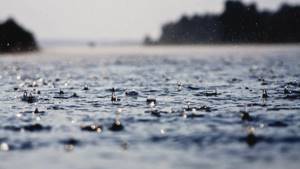
Atmospheric precipitation falls from rain clouds formed as a result of a decrease in pressure (precipitation, warm front) or as a result of convection - convection clouds (rainfall, cold front).
In winter, precipitation is always associated with cyclones and low pressure that accumulates clouds; in summer, there is no strict dependence of precipitation on pressure.
Sign: if bubbles form on the water during rain, low pressure has established.
Fish biting before and after rain
How does rain affect fish bite? In addition to the fact that rain is a consequence of changes in pressure or redistribution of air masses, which in itself affects the fish bite, a significant amount of precipitation can cause a decrease in water temperature, an increase in water level, and the entry of various food into the reservoir along with rain streams.
Observations show that after a long period of heat, rain has a positive effect on fish biting. Often, fish bite better before rain, if it is caused by a decreased pressure level. A good fish bite after rain is associated with an improvement in the temperature of the reservoir and an increase in the amount of dissolved oxygen.
The fish bite in the rain may worsen if it is a long autumn rain with cold weather.
What is wind
First, let’s look at the definition of this concept so that everything becomes as clear as possible. Wind is the movement of air currents from one point on earth to another. It occurs due to differences in atmospheric pressure in different parts of the planet. By and large, this phenomenon is possible due to uneven heating of the Earth's surface by the Sun. If too little heat is absorbed in one place, and too much in another, then air masses are formed, which redistribute the energy. They bring with them moisture or dryness, cooling or warming.
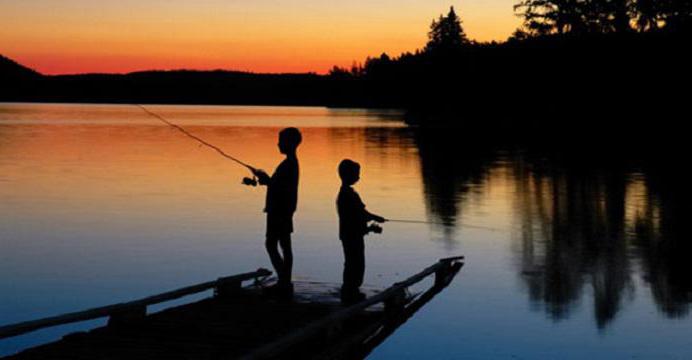
Wind affects bodies of water and, consequently, their inhabitants. At the same time, air flows have a number of characteristics on which the intensity of the impact on the water area depends. Therefore, it is important to understand in which wind the fish bite better.
Wind and fish bite
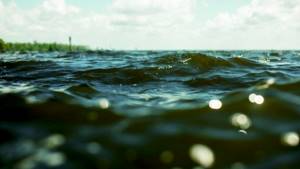
Wind is the horizontal movement of air masses towards low pressure. Wind varies in strength, direction and duration. Interacting with the surface of the water, the wind forms waves.
Fish biting in the wind
How does wind affect fish bite? The wind affects the temperature of the reservoir and excitement. So, for example, a cold north wind after a prolonged heat can have a beneficial effect on the fish bite, and during the autumn cold snap, on the contrary, it can cause its weakening. A warm southerly wind will be useful after a cold snap with fairly low water temperatures.
Direction of the wind
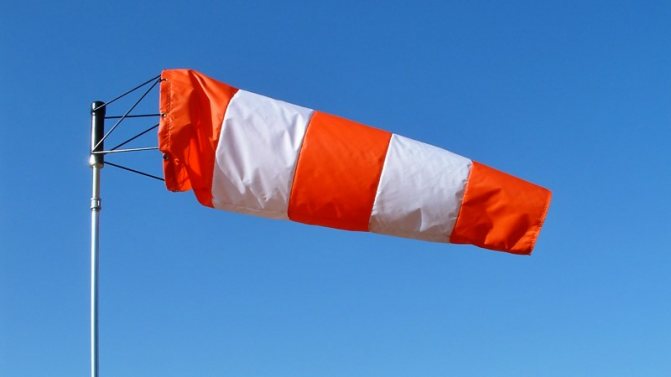
Observations show that the most favorable winds for biting fish are the southwest, west and south winds. The worst fish bite is observed in northern, eastern and mixed north-eastern winds.
Wind force and wind waves
Wind waves also affect the fish bite. A light headwind causes ripples on the surface of the water and a small surf, which creates more favorable fishing conditions - the fish stops seeing and hearing what is happening on the shore. A moderate wind against the current helps in controlling the gear, and is especially useful when fishing with a float rod. A strong wind raises a large wave, which makes it difficult to control the tackle and has a negative impact on the bite.
By itself, the wind is not a very significant factor for fish bite, but it indicates that the weather is changing. The fish bite is more strongly influenced by other factors related to the wind - this is primarily a change in pressure.
In addition to all of the above, the influence of hydrological factors on the bite should also be taken into account.
The influence of wind on the bite
When planning to return from fishing with a good catch, it is very important to take into account the presence of wind, as well as its strength and many other factors. Of course, the wind does not have a direct effect on the fish that swim in the depths of the water. However, the movement of air masses and the nature of these phenomena undeniably influence the following factors:
- Temperature of air and upper layers of water;
- Insect activity;
- Atmospheric pressure at the water's edge;
- The presence of waves on a body of water, as well as the strength and direction of their movement.
Cold northern winds can quickly cool even thoroughly heated air masses and water. In addition, in such a wind, the insects that fish like to feed on also show minimal activity. As a result, the fish also tries not to waste energy looking for food that shouldn't be there. Warm air currents awaken insects, and therefore the fish also become active, realizing that food should soon appear.
It is worth considering that the wind can indirectly influence the location of fish in a reservoir. In the strong and bright summer sun, it mainly hides in shady waters. And since the wind often brings clouds with it, the weather becomes cloudy. At this time, the fish rises to warm itself. In addition, cloudy weather brought by the wind can be a sign of imminent rain, during which fish love to hunt.
Why don't the fish bite?
Often, fishing enthusiasts, spending their leisure time with a fishing rod in their hands and looking for a long time at a motionless float, ask themselves this short and, as it turns out, difficult question. First of all, it is difficult for novice fishermen to get an answer to this question.
Fishing only at first glance seems like a simple hobby. A large army of fans of this fascinating activity is working to resolve the problem of lack of bite, analyzing various reasons and developing practical skills, sharing experiences and helping with advice.
And so that it doesn’t happen that “I fished until the evening, but there was nothing to eat for dinner,” let’s try to expand the circle of knowledge about why the fish don’t bite and what to do about it.
Summarizing
Taking into account all of the above, we can safely answer the question of in which wind the fish bite better, and in which - worse.
The best time for fishing is considered to be the first day after the weather changes: from cold to warm or from hot to cool. The most favorable wind directions are southern and western. Northern gusts significantly reduce fish activity. Also considered optimal is the wind, which with its force creates only light ripples on the water.
There are other nuances associated with biting. They also need to be taken into account before you go fishing.
What to do if the fish doesn't bite
Think about why the fish has no desire to peck, whether there are objective reasons that are beyond your power to change. If there are unavoidable circumstances, fishing should most likely be stopped. If there are some points that you have not taken into account and you can correct something - go for it! Start experimenting: with different baits, places, and so on. There can be many options. So what can be done.
Change the nozzle
Try:
- Use a different bait (fish can change their taste preferences quite quickly).
- Change the size of the bait (perhaps a well-fed fish will not take a large bait, but will swallow a small one).
In summer, fish will like baits that originate from plants, and in spring and autumn from animals. When it doesn’t bite, you have to try different ones. It happens that the fish does not bite, for example, on a worm and maggot separately, but as soon as you put both of them on the hook together, a bite will follow. This and other similar sandwiches help make lethargic fish want to snack.
Change location
Do this taking into account weather conditions and water conditions. When it’s hot, you should look for fish in the depths or in the shade, because, of course, they hide from excessively warm water, and they don’t like the scorching rays of the sun. And vice versa, when the water is not warmed up enough, you need to fish where it is shallower and in those parts of the reservoir that are illuminated by the sun's rays. Remember that fish prefer safety and choose places overgrown with vegetation.
Feed the place
If this has already been done, but there is no effect, change the bait. Try adding the bait you are using to it.
Slow down the wiring
While the fish is in an active state, it is easy for it to attack fast prey, but then a moment comes when it is no longer in the mood to pursue it, and it begins to ignore quickly baited baits. But if the baits are slow, floating in the water and do not require chasing, the fish may be tempted.
Change gear
The fish may be alarmed by an overly thick fishing line. Try switching to a smaller diameter; you will also get the advantage that it will be easier for you to cast small baits. A sinker that is too light will result in the bait being washed ashore. The hook must correspond to the size of the bait, and not the intended fish.
Try catching a different fish
There is no need to sit for hours hoping to catch only a certain type of fish. At this time, another species may be active and it would be more advisable to switch to it.
Catch at different times
Monitor the weather closely and decide to go out on the water when the weather best suits the fish's activity. The chances of achieving the desired catch increase significantly.
Chat with fishermen nearby and ask what is wrong with their bite, what tricks they used to improve the bite, try to find out where to look for the possible cause of errors or what techniques should be used in your case to correct the situation.
The right choice and purchase of fishing gear is a key point in preparing for fishing. Choose the right feeder rods, fly rods, spinning rods, and reels.
It is important for a novice fisherman to choose the right place - a coastal echo sounder allows you to do this in any fishing spot.
How to increase your fish catch?
Over 7 years of active fishing, I have found dozens of ways to improve the bite. Here are the most effective ones:
- Bite activator . This addition of their dry blood is the strongest lure for fish in cold and warm water. Discussion of the bite activator “Hungry Fish”.
- Increased gear sensitivity. Read the appropriate manuals for your specific type of gear.
- Pheromone -based lures .
Popular reasons for the lack of bite of carp and crucian carp
Successful fishing for carp and crucian carp largely depends on how fully you take into account the general reasons why fish may not bite, and also take into account some of the characteristics of these fish.
During spawning, they think more about the safety of laying eggs, and not about how to eat more, the natural instinct of self-preservation and procreation is triggered. But after the spawning ends (in the first days of June), good days begin for fishermen.
Carp and crucian carp feed mainly in the morning, evening and at night , so those who like to sleep longer will usually have to wait until the evening.
It is not recommended to go fishing if there is bad weather or prolonged heat outside with a temperature above 27 degrees , it is better to wait until the temperature in calm and clear weather is no higher than 23 degrees.
Carp will not bite before a sharp change in the weather ; they will bite weakly or sometimes not at all if there is drizzle outside, accompanied by a noticeable cold snap.
If there are a lot of insects on the surface of the water, and the crucian carp are overeating, you are unlikely to be able to tempt them with even the most attractive bait.
When feeding the fishing spots, it is important not to overdo it, because the bite can not only become inactive, but also stop altogether. The probability of a bite will be very low after the carp is overfed by those who like to catch it with peas. By adding a few extra grains of pearl barley you can kill the crucian carp bite for a couple of hours. The noisy fall of the next bait balls will frighten the carp and crucian carp, and the bite will not return soon.
Carp and crucian carp are very cautious and suspicious. People in bright clothes (red, white, yellow), making noise and moving a lot on the shore, not covering themselves from the eyes of the fish and not moving enough away, can cause a lack of bite.
And, of course, a possible reason for the lack of a bite may be the use of incorrect equipment. In this case, try to sequentially change its individual elements.
Answers on questions
- What weather does the fish bite best in? Unchanging for several days and throughout the day. Even in the rain, fish can actively bite if the weather has been like this for 2-3 days.
- In what wind do fish bite? In the absence of wind or slight ripples. The wind direction does not matter in this case. If the wind is strong (more than 4 m/s), then the fish rolls to depth and its bite depends on the direction of the wind. The worst wind is any variation of the east. Sudden changes in wind are also bad. It is better to choose calm days for fishing.
- At what pressure do fish bite? 760 mmHg column - this is normal pressure and the fish bites perfectly at this pressure. But there are areas on earth where such pressure does not exist at all, and the fish still have to feed. The most important rule is no change in pressure. If the pressure changes, it will have a bad effect on the fish biting.
- Do fish bite in the rain? Crucian carp often stops biting because it is very picky. And with light rain, most fish continue to feed, and therefore continue to bite.
Knowing the common and typical reasons for a lack of bite for certain types of fish, you will be able to independently develop an effective strategy of behavior that should not leave you without a catch. With the exception of new fishing spots, where “if you don’t get a bite, don’t be upset: maybe there are no fish here at all.”
The best floats for catching crucian carp - review of weather conditions
The choice of float is determined by the specific body of water and weather conditions at the moment.
Calm water in calm weather
In these conditions, the best choice would be quill and needle floats.
Picture 1.
They have the highest sensitivity of all the many float configurations. By their behavior, you can determine not only the final decision of the crucian carp to profit from the bait, but also the moment when he only determines its taste and wonders whether it is worth taking the candy presented to him.
These are the best floats for catching crucian carp, because they work equally well both for raising the bait (in this case they lie on its side), and for moving it to the side (slow movement with immersion), and for deep biting (quick flooding). In addition, their lightness is imperceptible to crucian carp, with all its delicacy.
Calm water in windy weather
When the wind blows, the whole idyll collapses. The surface of the water is covered with ripples and the “quill pen” and “needle” become unusable. They are blown to one side and jump on the washboard.
A bite can only be determined if the crucian carp immediately drags the bait to the bottom. And this is not in the nature of crucian carp. The float needs to be changed.
Figure 2.
This type of float is inferior in sensitivity to the “goose” float, but it is most suitable for windy weather. Especially if it is delicately loaded (Fig. 2).
The antenna protruding above the water easily cuts the ribbed surface of the water, and the sunken body of the float does not react to the wave, remaining in a calm state. And any type of bite is easily detected.
Are you interested in catching bleak using a bombard? Our article will tell you and show you more about this. In this article you will learn about the beneficial and harmful properties of pike perch for human health.
Quiet current
Conditions of medium, especially strong, current are not considered, since crucian carp have nothing to do there. But the float has to be changed again (Figure 3).
Figure 3.
The float for the current must have an increased load capacity. Firstly, because its keel should be loaded with pellets for better stability of the float. Secondly, the sinker on the fishing line also needs to be increased to the degree of resistance to flow.
The fishing line must be attached to such a float at two points. This increases the stability of the float. Unfortunately, its sensitivity decreases. But with increased attention, the bite is clearly visible.
And here's what you need to know: Tackle for catching pike with a spinning rod
In this video, an experienced fisherman will share his secrets.
The direction of air masses has a strong influence on the final result of fishing. Experienced anglers have long noticed that there will be an active bite in the northwest, west, southwest and south winds.
Cold currents, as already mentioned, reduce fish activity, but this is an ambiguous situation. When the north wind appears, some predatory individuals, on the contrary, begin to bite well.
And you need to understand this when you go to catch a specific species. Sometimes the bite decreases slightly with flows in the north-eastern, eastern and south-eastern directions.
